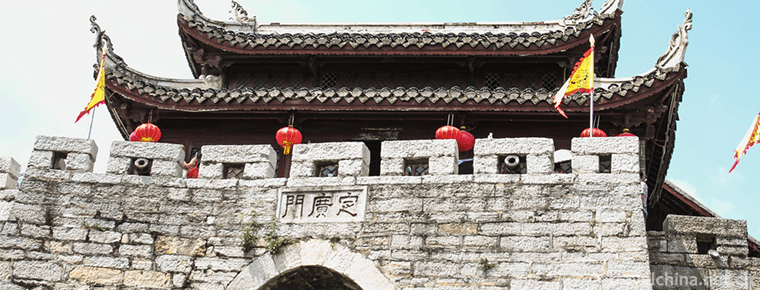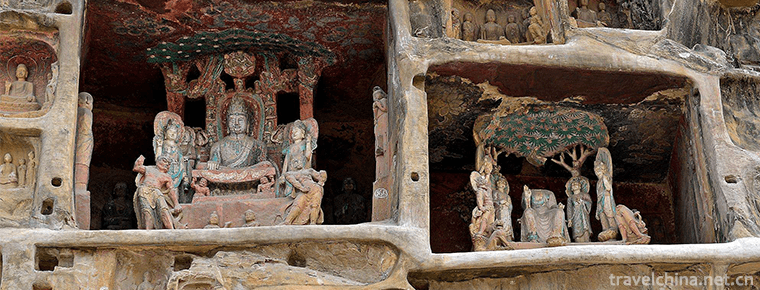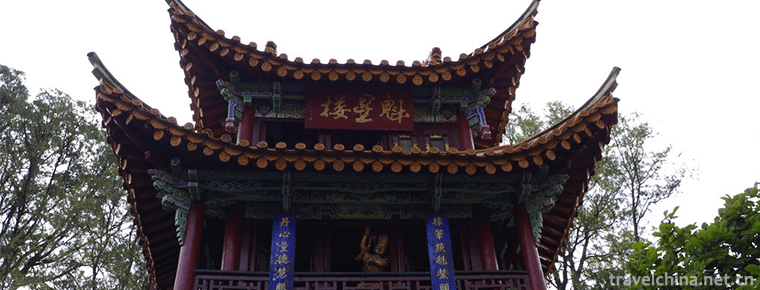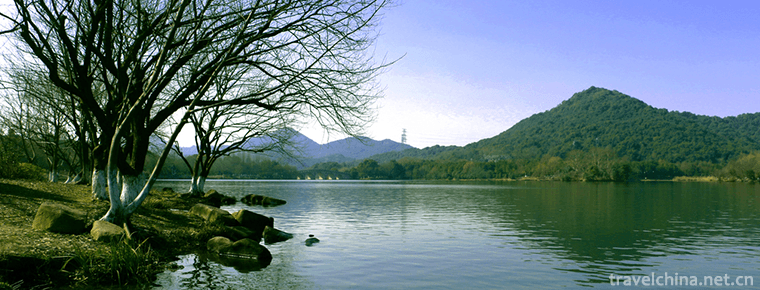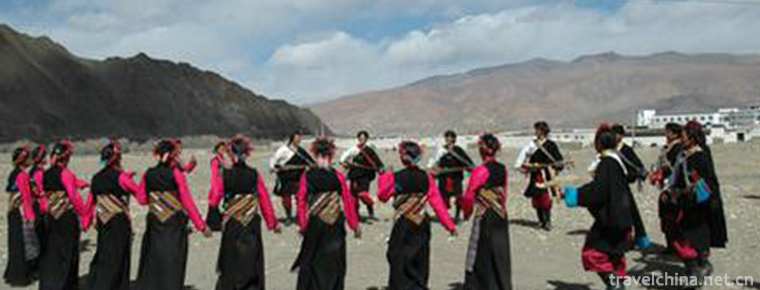Aquatic horsetail embroidery
Aquatic horsetail embroidery
Horsetail embroidery of Shui nationality is one of the national intangible cultural heritages of traditional fine arts in Sandu Shui Autonomous County, Guizhou Province.
Horsetail embroidery is a special embroidery technique inherited from generation to generation by Chinese aquarium women, which is the oldest and most national characteristic. It takes horse tail as an important raw material. Making process of horsetail embroidery is cumbersome and complex. The finished product is antique, exquisite and durable. Embroidery pattern is simple, elegant, abstract and has a fixed frame and pattern. Horsetail embroidery of Shui nationality has been handed down in Sandu Autonomous County for thousands of years, and has the reputation of embroidery "living fossil".
In May 2006, the horsetail embroidery declared by Sandu Shui Autonomous County of Guizhou Province was approved by the State Council of the People's Republic of China and listed in the first batch of national intangible cultural heritage list. The heritage number is_-23.
historical origin
There is no record of the origin of the horsetail embroidery of the Shui nationality, but it is a skill that has been handed down for thousands of years. It is the crystallization of the wisdom of the ancestors of the Shui nationality. We can only see it from the festival customs of the Shui nationality. Traditionally, the Duanjie (equivalent to the Spring Festival of the Han nationality) has the custom of horse racing. It seems that horse racing has a long history. In this long history, aquarium women invented the art of making embroidery with horsetail. Maybe the main reason is that the aquarium has the custom of raising horses and horse-tail embroidery came into being.
With the change of times, the art of horsetail embroidery is also changing. The main tone of the two straps has changed. Before liberation, the main tone of the straps was yellow. Relating to the nobility of yellow in feudal society, the main color of the back belt after liberation is red, which is the same as the concept of red as luck today.
Cultural characteristics
Characteristics of embroidery methods
This embroidery method with silk thread wrapped in horsetail has two obvious advantages. One is that the horsetail is hard in texture and can not easily deform the pattern. The other is that the horsetail is not easy to corrupt and deteriorate, and the aquatic horsetail embroidery is durable. In addition, horsetail may contain oil components, which is beneficial to maintain the luster of peripheral silk.
Major product forms
The main products are horsetail embroidered "evil knot" straps, horsetail embroidered straps and horsetail embroidered shoes.
The "evil knot" strap of horsetail embroidery
Horsetail embroidery "evil knot" strap is recognized as one of the best straps in the aquarium area, often through 52 processes to complete, the aquarium people often regard whether to have a horse tail embroidery strap as a sign of dignity and wealth. Horsetail embroidery strap mainly consists of three parts, the upper part is the main pattern, consisting of more than 20 pieces of different sizes of horse tail embroidery pieces. The surrounding frame is flat embroidered with bright red or dark green silk thread on the color satin base, while the upper two sides are horse tail embroidery straps, and the lower half is the back strap tail. There are exquisite horse tail embroidery patterns that correspond to the main part. The "evil knot" becomes the whole body. Complete artwork of embroidery. It takes about a year to make such a knot. The middle-aged and old women of Shui nationality usually do not need paper-cut bottom pattern to make "evil ending" tail flower, but embroider directly on red or blue satin with prefabricated horsetail embroidery thread tray. They use knot embroidery, flat needle and random needle synthetically. They are flexible and comfortable, and the pattern is beautiful and durable.
Horsetail embroidered back strap
"Horsetail embroidery" is actually a gorgeous embroidered "T" shaped "curtain", with tapes on both sides of the upper end, "curtain" size can accommodate young children. Its prominent feature is that it does not need paper-cut patterns to make background, but only depends on experience. First of all, two or three horsetail composite stocks are wrapped with white silk thread thinner than horsetail hair (which is split into silk) to form "horsetail thread". Then, according to their imagination, the embroiderer uses color "horsetail line" to set various geometric patterns and flower, grass, bird and sparrow pattern skeleton on the backpack (the patterns are mainly elastic horn flower, water wagon pattern, pepper pattern, echo pattern and twill pattern). The pattern, square pattern and fishbone pattern are fixed with needle and white thread. Finally, the pattern skeleton is filled with knot embroidery and spiral embroidery, which is called "patch flower" and then is embellished with shining "golden thread", thus forming a beautiful picture with complete structure, vivid image, distinct color, meticulous and delicate, luxurious and noble. The contrast of black, red, yellow and white forms a distinct visual effect. Baby straps are not only beautiful and generous, but also strong and durable. They are the best dowry prepared by mothers for their daughters. A ponytail embroidered dress often takes a woman several years or even more than ten years, so it is also the standard to measure the foundation of a girl's female honour.
Horsetail embroidered shoes
"Horsetail embroidery" embroidery shoe is a kind of tipped cloth shoe, the tips of which are pointed upward. The production method is to embroider the upper with colored silk thread to form a bottom color pattern.
Then the horsetail embroidery method is adopted, the horsetail is wrapped with silk thread, curled into various geometric patterns and mounted on the upper, then the edge is inlaid and patched. Its craft is very complex, but the embroidered pattern is three-dimensional, exquisite and chic, which can be called exquisite handicraft. Therefore, aquarium women often wear it on solemn occasions or when they visit relatives. It is very elegant and luxurious to wear blue cloth jacket, pleated skirt and silver bra with soybean milk printing and dyeing.
Inheritance and Protection
Inheritance value
The horsetail embroidery of Shui nationality has a long history and simple needling method, which is called "living fossil in embroidery". Horsetail embroidery's unique material and technology make its works full and clear, showing a unique relief texture, luxurious and stable color matching, smooth lines, full and mysterious patterns impact people's visual senses, showing a unique charm.
Heritage figures
Wei Taohua, female, Shui Minority, born in 1964, is the first national intangible cultural heritage project inheritor of aquarium horsetail embroidery.
Song Narcissus, female, Shui Nationality, born in 1966, is the first national intangible cultural heritage project inheritor of Shui Nationality Horsetail Embroidery.
protective measures
In 2008, Sandu County set up a leading group for the development of Mawei embroidery, formulated the Five-Year Development Plan for the Training of Aquatic Mawei Embroidery Folk Artists in Sandu Aquatic Autonomous County, led by the County Personnel, Labor and Social Security Bureau, and jointly participated by the County Poverty Alleviation Office, Minzong Bureau, Economic and Trade Bureau, Tourism Bureau, Wen Guang Bureau and Wen Lian, which clearly defined "further protection, development and promotion of Aquatic horses". Tail embroidery technology, comprehensively improve the production level and marketing ability of horse-tail embroidery, cultivate and bring up a group of excellent folk artists of horse-tail embroidery production, "the guiding ideology, reflects the local government's emphasis on traditional local handicraft.
From 2007 to 2011, Sandu County holds horse-tail embroidery training courses every year, including the popular "rural aquarium women horse-tail embroidery technology training courses", "horse-tail embroidery local talent training courses", as well as the improved "skilled craftsmen horse-tail embroidery advanced training courses" for skilled artists.
social influence
Important Exhibitions
From October 31 to November 4, 2018, the aquarium horsetail embroidery as a non-heritage project outside Guangdong Province participated in the Guangdong Non-heritage Week and Foshan Autumn Tour in Dawan District of Guangdong, Hong Kong, Macao and the Pan-Pearl River Delta.
On March 12, 2019, China Textile Non-material Cultural Heritage Exhibition with the theme of "Weaving Words and Embroidery Words" appeared at China International Family Textiles and Accessories (Spring and Summer) Exposition. This exhibition shows Miao batik technology, batik product production and marketing, Buyi traditional weaving technology, aquarium horsetail embroidery technology, horsetail embroidery how to integrate into daily life.
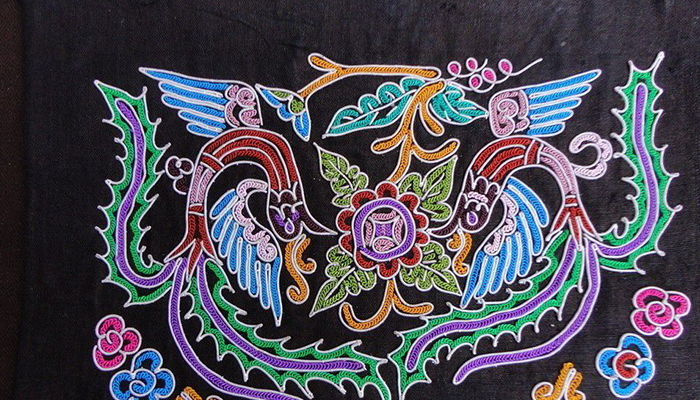
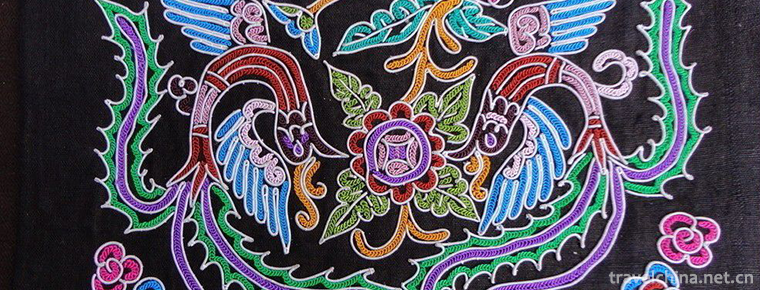
Aquatic horsetail embroidery
-
Huaxi Qingyan Ancient Town Scenic Area
Qingyan Ancient Town, one of the four ancient towns in Guizhou, is located in the southern suburb of Guiyang City. It was built in Hongwu ten years (1378) of Ming Dynasty and was formerly a military f
Views: 227 Time 2018-12-12 -
Wuying National Forest Park
Wuying National Forest Park is located in Wuying District, Yichun City, Heilongjiang Province, about 19 kilometers away from the urban area. It is a concentrated protected area of Korean pine in China
Views: 305 Time 2018-12-22 -
Qianfoya Scenic Spot
Guangyuan Qianfoya is the largest grotto group in Sichuan Province. The statues of cliffs began in the Northern Wei Dynasty. After nearly 1500 years, the cliffs, which are 45 meters high and 200 meter
Views: 130 Time 2018-12-26 -
Jindian Scenic Spot
Kunming Golden Palace Scenic Spot, also known as Tongwa Temple, is made of brass and shines in the sunshine, reflecting the golden brilliance of Cuigou Youlin
Views: 175 Time 2019-01-22 -
Xianghu Lake
Xianghu Lake is known as the "sister lake" of the West Lake for its beautiful scenery. It is a lake located in Xiaoshan District, Hangzhou City, Zhejiang Province, China. Xianghu Lake is als
Views: 196 Time 2019-02-25 -
Heap harmonics
"Heap Harmony" first spread in the Yarlung Zangbo River Basin, the high terrain west of Shigaze to the whole area of Ali circle dance, and later gradually prevailed in Lhasa. It was the firs
Views: 113 Time 2019-04-28 -
Guilin fishing drum
Guilin fishing drum, commonly known as sentiment, is the local traditional rap and singing art of Guilin. The Song Dynasty was introduced into Guilin from the north,
Views: 163 Time 2019-05-02 -
Legend of Liu Bowen
Liu Bowen's legend is based on the traditional folk oral literature of Liu Ji, a historical figure, spread throughout the whole country in eastern Zhejiang, with Qingtian, Wencheng and other southern
Views: 433 Time 2019-05-13 -
Peking University
Founded in 1898, Peking University was first named as Beijing Normal University Hall. It was the first national comprehensive university in China and the highest educational administrative organ at th
Views: 268 Time 2019-08-30 -
Land resources in Suining
The total cultivated land area of Suining is 2.2815 million mu, of which the purple soil area is the largest, accounting for 62% of the cultivated land area, which is widely distributed in the low mountain and hilly areas.
Views: 352 Time 2020-12-16 -
Meishan local culture
Meishan culture mainly includes Dongpo culture, longevity culture, Taoism culture, Buddhist culture, bamboo culture, water culture and so on. The past Meishan Dongpo Cultural Festival, Pengzu Shouxing Festival, Qingshen bamboo weaving art festival, Danling suona Festival, etc.
Views: 335 Time 2020-12-18

